Themed collection Molecular Materials and Devices

Molecular materials and devices: an interdisciplinary field of research
Welcome to this themed collection of Materials Chemistry Frontiers entitled: ‘Molecular Materials and Devices’.

Mater. Chem. Front., 2018,2, 10-10
https://doi.org/10.1039/C7QM90042B
Electrolyte-gated light-emitting transistors: working principle and applications
The material selection, working mechanism and target application in the development of electrolyte-gated light-emitting transistors are summarized.
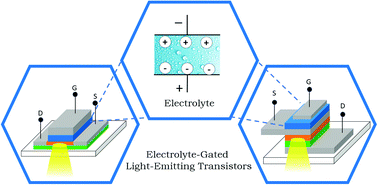
Mater. Chem. Front., 2018,2, 253-263
https://doi.org/10.1039/C7QM00258K
Recent progress in interface engineering of organic thin film transistors with self-assembled monolayers
This review introduces basic concepts and recent progress in self-assembled monolayers as a powerful tool for interface engineering of organic thin film transistors.
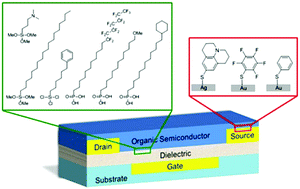
Mater. Chem. Front., 2018,2, 11-21
https://doi.org/10.1039/C7QM00279C
Design and effective synthesis methods for high-performance polymer semiconductors in organic field-effect transistors
Design and effective synthesis methods for high-performance polymer semiconductor-based OFETs.
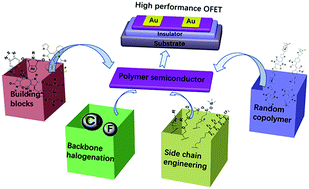
Mater. Chem. Front., 2017,1, 2423-2456
https://doi.org/10.1039/C7QM00169J
Recent development and understanding of polymer–nanocrystal hybrid solar cells
This review presents a general overview of polymer–nanocrystal hybrid solar cells (HSCs). The device structure and operation mechanism of bulk heterojunction HSCs are introduced, and recent works that have been done to improve the device performance or clarify the operation mechanism are summarized and discussed in detail. Also, the challenges and perspectives of HSCs are presented.
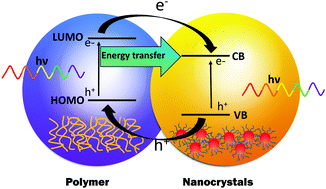
Mater. Chem. Front., 2017,1, 1502-1513
https://doi.org/10.1039/C7QM00022G
Highly oriented two-dimensional formamidinium lead iodide perovskites with a small bandgap of 1.51 eV
Small bandgap 2D perovskites were synthesized with desired orientation and the corresponding solar cells presented high efficiency and good stability.
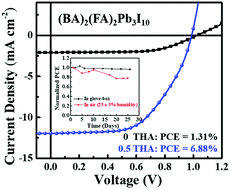
Mater. Chem. Front., 2018,2, 121-128
https://doi.org/10.1039/C7QM00472A
Micro organic light-emitting diodes fabricated through area-selective growth
A photolithography compatible way for the fabrication of Micro-OLED devices via area-selective growth is developed.
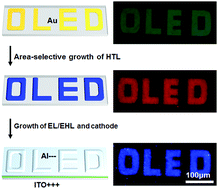
Mater. Chem. Front., 2017,1, 2606-2612
https://doi.org/10.1039/C7QM00383H
A new class of gold(III) complexes with saturated poly(benzyl ether) dendrons for solution-processable blue-green-emitting organic light-emitting devices
Blue-green-emitting solution-processable OLEDs have been realized by the incorporation of a saturated dendrimer onto alkynylgold(III) complexes.
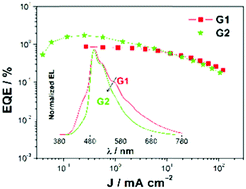
Mater. Chem. Front., 2017,1, 2559-2568
https://doi.org/10.1039/C7QM00289K
Charge mobility enhancement for diketopyrrolopyrrole-based conjugated polymers by partial replacement of branching alkyl chains with linear ones
Side-chain engineering of three new conjugated D–A terpolymers by varying the number of branching and linear alkyl chains is presented for OFET studies.
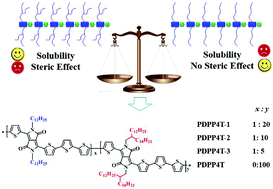
Mater. Chem. Front., 2017,1, 2547-2553
https://doi.org/10.1039/C7QM00307B
Ground-state conformers enable bright single-fluorophore ratiometric thermometers with positive temperature coefficients
A pseudo-rigid fluorophore with multiple conformers enables highly reliable single-fluorophore ratiometric temperature sensing.
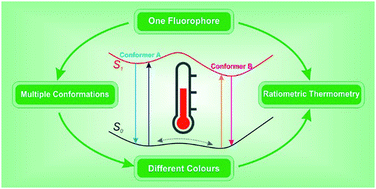
Mater. Chem. Front., 2017,1, 2383-2390
https://doi.org/10.1039/C7QM00345E
Ureasil organic–inorganic hybrids as photoactive waveguides for conjugated polyelectrolyte luminescent solar concentrators
We test the potential of resonance energy transfer to enhance the performance of conjugated copolyelectrolyte donor–acceptor luminescent solar concentrators immobilised within a photoactive organic–inorganic ureasil waveguide.
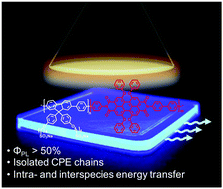
Mater. Chem. Front., 2017,1, 2271-2282
https://doi.org/10.1039/C7QM00264E
A thieno[3,4-b]thiophene-based small-molecule donor with a π-extended dithienobenzodithiophene core for efficient solution-processed organic solar cells
A molecular donor STB-4 with a dithieno[2,3-d′:2′,3′-d′]benzo[1,2-b:4′,5′-b′]dithiophene core was synthesized for organic solar cells with a power conversion efficiency of 8.17%.
![Graphical abstract: A thieno[3,4-b]thiophene-based small-molecule donor with a π-extended dithienobenzodithiophene core for efficient solution-processed organic solar cells](/en/Image/Get?imageInfo.ImageType=GA&imageInfo.ImageIdentifier.ManuscriptID=C7QM00291B&imageInfo.ImageIdentifier.Year=2017)
Mater. Chem. Front., 2017,1, 2349-2355
https://doi.org/10.1039/C7QM00291B
A glutamic acid-modified cellulose fibrous composite used for the adsorption of heavy metal ions from single and binary solutions
A new glutamic acid modified cellulose fibrous composite has been developed for Cu2+ and Hg2+ adsorption. The adsorption reaction follows a pseudo-second-order model, indicating the overall rates for the adsorption on GMC are controlled by chemical adsorption.
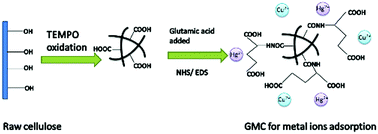
Mater. Chem. Front., 2017,1, 2317-2323
https://doi.org/10.1039/C7QM00210F
A pH-sensitive multifunctional fluorescent probe based on N-annulated perylene for the sensitive and selective detection of hypochlorous acid
The pH-sensitive multifunctional fluorescent probe PNPM based on N-annulated perylene was firstly developed for detecting HOCl selectively. And the probe could detect pH and HOCl simultaneously, and was successfully employed to detect HOCl in serum and water samples.
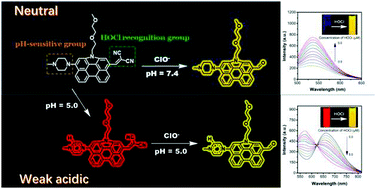
Mater. Chem. Front., 2017,1, 2292-2298
https://doi.org/10.1039/C7QM00298J
Phase separation and electrical performance of bithienopyrroledione polymer semiconductors embedded in insulating polymers
Bithenopyrroledione based polymer semiconductors formed micro-sized fibers and were well dispersed in polymer semiconductor/PMMA blend films. The blend film transistors showed ambipolar behavior in a N2 atmosphere with a hole mobility of 0.1 cm2 V−1 s−1 and an electron mobility of 0.05 cm2 V−1 s−1.

Mater. Chem. Front., 2017,1, 2265-2270
https://doi.org/10.1039/C7QM00261K
New method for the synthesis of a highly-conjugated acene material and its application in Perovskite solar cells
Kita-type coupling and Scholl-type oxidative cyclodehydrogenation to afford acene from binaphthalene and mesitylene is as an effective alternative to the reported approaches.
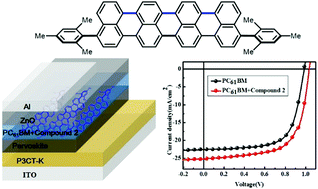
Mater. Chem. Front., 2017,1, 2261-2264
https://doi.org/10.1039/C7QM00319F
Multicarbazolyl substituted TTM radicals: red-shift of fluorescence emission with enhanced luminescence efficiency
Rotation restricted multicarbazolyl substituted TTM radicals: red-shift of fluorescence emission with enhanced luminescence efficiency.
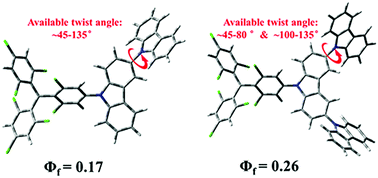
Mater. Chem. Front., 2017,1, 2132-2135
https://doi.org/10.1039/C7QM00273D
Flexible unipolar thermoelectric devices based on patterned poly[Kx(Ni-ethylenetetrathiolate)] thin films
A unipolar thermoelectric device of poly[Kx(Ni-ethylenetetrathiolate)] was patterned via an electrochemical process on a prepatterned PET substrate with printed PDMS.
![Graphical abstract: Flexible unipolar thermoelectric devices based on patterned poly[Kx(Ni-ethylenetetrathiolate)] thin films](/en/Image/Get?imageInfo.ImageType=GA&imageInfo.ImageIdentifier.ManuscriptID=C7QM00223H&imageInfo.ImageIdentifier.Year=2017)
Mater. Chem. Front., 2017,1, 2111-2116
https://doi.org/10.1039/C7QM00223H
Novel vinylene-bridged donor–acceptor copolymers: synthesis, characterization, properties and effect of cyano substitution
Cyano groups were introduced into two vinylene-bridged monomers and four polymers were synthesized, and their FET performances were fully studied.
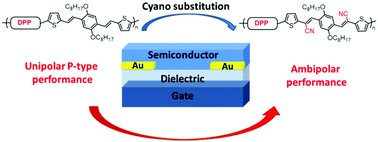
Mater. Chem. Front., 2017,1, 2103-2110
https://doi.org/10.1039/C7QM00236J
An amino-substituted perylene diimide polymer for conventional perovskite solar cells
An amino-substituted conjugated polymer (PPDI-F3N) is synthesized and used as a multifunctional interfacial layer to modify TiO2 films in conventional planar perovskite solar cells, leading to a higher efficiency, better stability and reduced hysteresis.
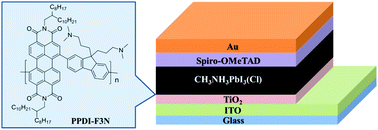
Mater. Chem. Front., 2017,1, 2078-2084
https://doi.org/10.1039/C7QM00221A
Morphology control enables thickness-insensitive efficient nonfullerene polymer solar cells
Thermal annealing can be used to achieve thickness-insensitive non-fullerene polymer solar cells.
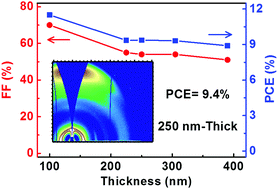
Mater. Chem. Front., 2017,1, 2057-2064
https://doi.org/10.1039/C7QM00182G
Highly efficient thermally activated delayed fluorescence materials with reduced efficiency roll-off and low on-set voltages
Two carbazole and diphenylamine terminated D–A type molecules were developed as TADF materials, achieving highly efficient blue and green emitting devices with low on-set voltages and reduced efficiency roll-off.
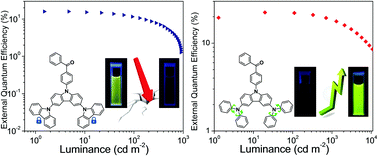
Mater. Chem. Front., 2017,1, 2039-2046
https://doi.org/10.1039/C7QM00195A
Water-dispersible hyperbranched conjugated polymer nanoparticles with sulfonate terminal groups for amplified fluorescence sensing of trace TNT in aqueous solution
The efficient encapsulation of TNT by numerous hydrophobic cavities inside the hyperbranched conjugated polymer core allows for amplified fluorescence quenching detection of TNT down to 0.8 ppb.
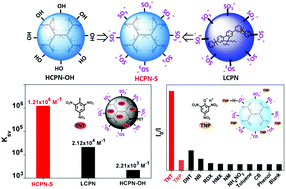
Mater. Chem. Front., 2017,1, 1875-1880
https://doi.org/10.1039/C7QM00173H
Supramolecular conjugated polymer materials for organelle imaging in living cells
A novel supramolecular system based on conjugated polymers is developed to realize specific targeting and imaging of organelles in living cells.
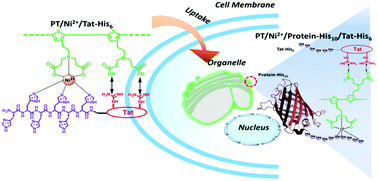
Mater. Chem. Front., 2017,1, 1768-1772
https://doi.org/10.1039/C7QM00105C
Dithieno[3,2-a:3′,2′-j][5,6,11,12]chrysene diimides and their molecular energy level regulation
Dithieno[3,2-a:3′,2′-j][5,6,11,12]chrysene diimides (DTCDIs), a new class of organic dyes, with a twisted molecular backbone were designed and synthesized.
![Graphical abstract: Dithieno[3,2-a:3′,2′-j][5,6,11,12]chrysene diimides and their molecular energy level regulation](/en/Image/Get?imageInfo.ImageType=GA&imageInfo.ImageIdentifier.ManuscriptID=C7QM00030H&imageInfo.ImageIdentifier.Year=2017)
Mater. Chem. Front., 2017,1, 1635-1640
https://doi.org/10.1039/C7QM00030H
Halogenated conjugated molecules for ambipolar field-effect transistors and non-fullerene organic solar cells
Halogenated conjugated molecules containing F, Cl, Br and I with high crystallinity were developed to show high electron mobilities of 1.3 cm2 V−1 s−1 in field-effect transistors and power conversion efficiencies above 9% in non-fullerene solar cells.
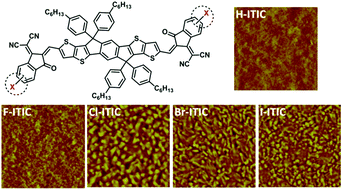
Mater. Chem. Front., 2017,1, 1389-1395
https://doi.org/10.1039/C7QM00025A
Graphdiyne for multilevel flexible organic resistive random access memory devices
A novel carbon material graphdiyne and thermally deposited Al–Al2O3 core–shell NPs were employed to realize flexible multilevel RRAM.
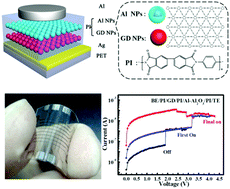
Mater. Chem. Front., 2017,1, 1338-1341
https://doi.org/10.1039/C7QM00009J
About this collection
Materials Chemistry Frontiers is delighted to publish the following collection of articles on “Molecular Materials and Devices”, guest edited by Daoben Zhu and Deqing Zhang from Institute of Chemistry, CAS.
This themed collection is dedicated to the design and synthesis of new optoelectronic materials and device applications. Key topics include but are not limited to:
- Design and synthesis of new conjugated molecular systems toward high-performance optoelectronic materials
- Exploration on the structure-property correlations and relevant physical studies
- Applications in optoelectronic devices
- Applications in biosensing/imaging and biomedical areas